The Iris has gone through 8 revisions so far, and it can be hard to remember the difference between revisions. So, we've put together some info about what those differences are so you know what to get.
Comparison Table of Revisions
Here's a table comparing the various revisions. For more info about each of the sections, additional information is provided below.
| Revision | Rev. 2 | Rev. 3 | Rev. 4 | Rev. 5 | Rev. 6 | Rev. 7 | Rev. 8 |
|---|---|---|---|---|---|---|---|
| Available | ✅ | ✅ | ✅ | ||||
| Controller | |||||||
| Pro Micro Based | ✅ | ||||||
| ATmega32u4 | ✅ | ✅ | ✅ | ✅ | ✅ | ||
| RP2040 | ✅ | ||||||
| Lighting | |||||||
| Single-color in-switch LEDs | ✅ | ✅ | ✅ | ✅ | |||
| RGB Underglow | ✅ | ✅ | ✅ | ✅ | ✅ | ✅ | |
| Per-key RGB LEDs | ✅ | ✅ | ✅ | ||||
| Other | |||||||
| Interconnect Cable | TRRS | TRRS | TRRS | USB-C | USB-C | USB-C | USB-C |
| Hotswap Sockets Pre-Installed | ✅ | ✅ | ✅ | ||||
| Encoder Support | No | At Left Shift | At Upper Thumb Keys | At Upper Thumb Keys | At Upper Thumb Keys | At Upper Thumb Keys and Top outer corners | At Upper Thumb Keys and Top outer corners |
| 2u Thumb Support | ✅ | ✅ | ✅ | ✅ | ✅ | ✅ | |
| Case Support | LE | LE, PE | LE, PE | PE, AE | PE, AE | PE, AE | PE, AE |
| Choc Support | KLP version only | ✅ | ✅ |
Availability
Iris Rev. 5, 7, & 8 PCBs are available through Keebio.
If you'd like a Rev. 2 PCB kit, they are available at Mechboards UK.
Controller
The Rev. 2 PCBs uses Pro Micro pin-compatible controllers, so you can use controllers like Pro Micros, Elite-C, Proton C, and nice!nano.
Revisions 3-7 all have ATmega32u4 controllers already soldered onto the board, so you don't have to add your own. This also means you can't add your own controller like the nice!nano to make it wireless.
Revision 8 has an RP2040 controller, which is much more powerful than the ATmega32u4 in terms of processing power and has a lot more memory.
Lighting
For the different lighting options, we've got some info on our documentation website describing the difference between the options: Keyboard Lighting Options.
Interconnect Cable
Interconnect cable refers to the cable used to connect both halves of the keyboard together so they can communicate with each other. TRRS is commonly used in split keyboards and was the cable used for Rev. 2-4 of the Iris, but we've migrated to using USB-C for interconnect, starting from Rev. 5 and on.
TRRS does have the potential for shorting issues with the microcontroller if the cable is pulled out while the keyboard is plugged in, while USB-C does not have this issue.
Hotswap Sockets Pre-Installed
The Rev. 6-8 have MX hotswap sockets pre-installed on the board. The Rev. 6 and 8 have hotswap sockets made by Kailh, while the ones on the Rev. 7 are made by Outemu or Kailh, depending on PCB batch. The sockets only accept MX-compatible switches, so no Alps or Choc switches.
For the other revisions, if you'd like to be able to hotswap switches, you can solder on Mill-Max sockets.
Rotary Encoders
For the revisions with encoder support, the positioning of the encoder pins vary between revisions, as shown in the diagram below:
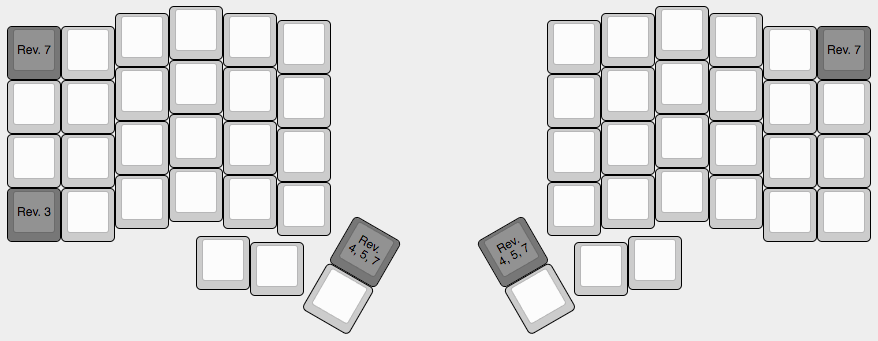
Encoders don't have to be installed at these spots, and switches can be installed there instead.
2u Thumb Key Support
On most revisions of the Iris, a 2u key can be used at each thumb instead of a pair of 1u keys. The only exception to this is the Rev. 6 as noted in the table.
Case Support
If you have Rev. 2, 3, or 4 PCBs and purchased a case/plates for them at the same time before the LE/PE designations were made, they are the LE version. The LE middle layers available are only compatible with Rev. 3 & 4 due to the placement of the port holes.
The newer version of case/plates are the PE ones, which are compatible with Rev. 3-8 PCBs.
The AE (Aluminum Edition) case will only be compatible with Rev. 5-8 PCBs.
Choc Support
Support for Kailh Choc V1 switches is only available on the KLP version of the Rev. 2 PCBs and Rev. 4 & 5.
A Choc-specific Iris board with integrated RP2040 microcontroller is currently in development.


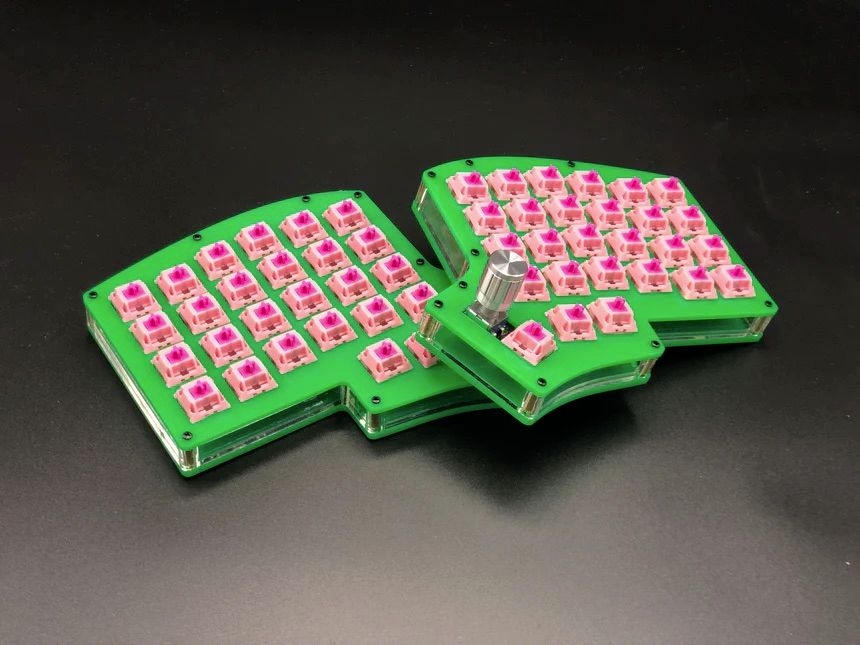
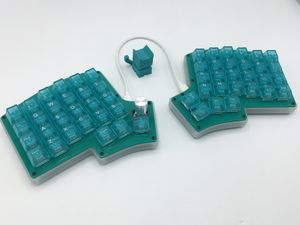
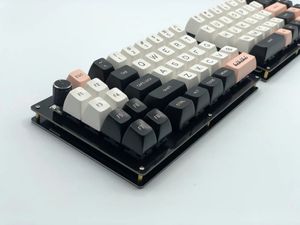
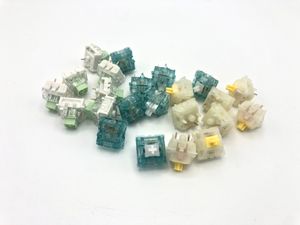
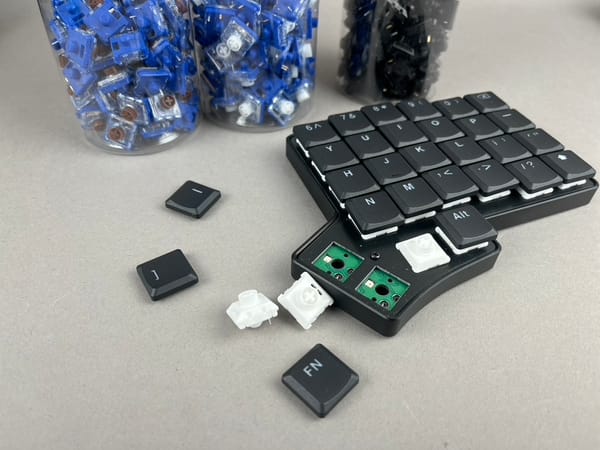
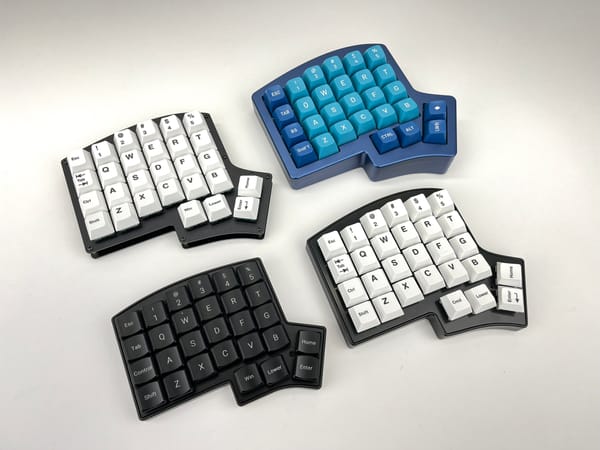

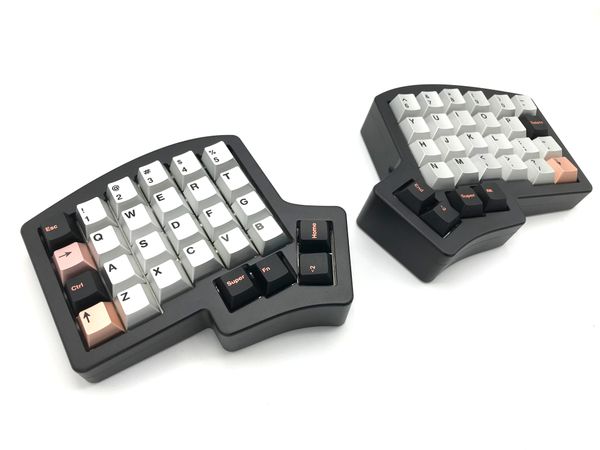
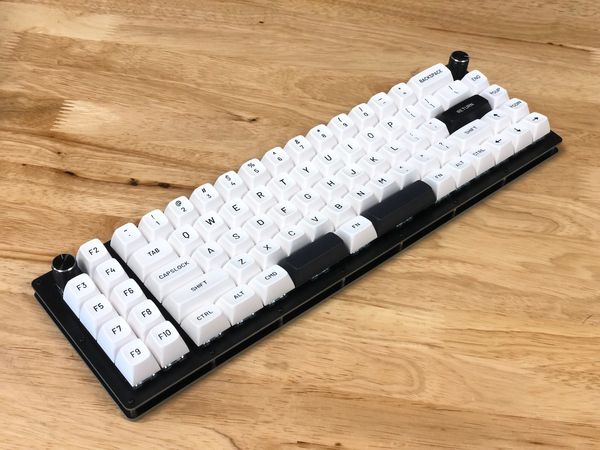
Member discussion